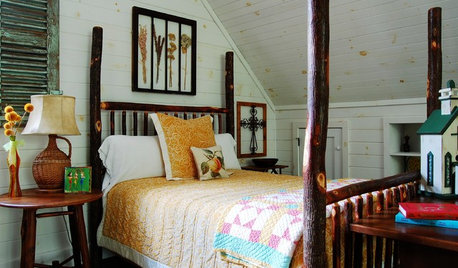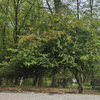Tree pruning question and advice on two trunks
robbo_lock
13 years ago
Related Stories

WINTER GARDENINGPruning Secrets for Exquisite Roses
Encourage gorgeous blooms year after year with this time-tested advice on how to prune your rosebush in winter for health and shape
Full Story
DECORATING GUIDESBring Nature Indoors With Tree Stumps, Trunks and Logs
Furniture formed from wood in its natural state adds earthy elegance to any room
Full Story
GARDENING GUIDESHow to Prune Your Flowering Shrubs for the Best Blooms
Less is often more when it comes to properly pruning flowering shrubs. Here’s what to do and why
Full Story
GARDENING GUIDESGot Frost-Damaged Plants? How It Happens, and When and How to Prune
Crispy brown leaves are a sure sign that Jack Frost has been to your neighborhood
Full Story
HEALTHY HOMEHow to Childproof Your Home: Expert Advice
Safety strategies, Part 1: Get the lowdown from the pros on which areas of the home need locks, lids, gates and more
Full Story
GARDENING GUIDESHow to Keep Your Trees Healthy
Ensure your trees’ vigor for years to come with these tips for protecting roots, watering effectively and more
Full Story
DECORATING GUIDES10 Design Tips Learned From the Worst Advice Ever
If these Houzzers’ tales don’t bolster the courage of your design convictions, nothing will
Full Story
BATHROOM DESIGNDreaming of a Spa Tub at Home? Read This Pro Advice First
Before you float away on visions of jets and bubbles and the steamiest water around, consider these very real spa tub issues
Full Story
FARM YOUR YARDAdvice on Canyon Farming From L.A.'s Vegetable Whisperer
See how a screened garden house and raised beds help an edible garden in a Los Angeles canyon thrive
Full Story
GARDENING GUIDESNo-Regret Plants: 5 Questions Smart Shoppers Ask
Quit wasting money and time at the garden center. This checklist will ensure that the plants you're eyeing will stick around in your yard
Full Story






brandon7 TN_zone7
brandon7 TN_zone7
Related Discussions
Pruning Peach Tree Without a Main Trunk
Q
Holly ID and Twisty Trunk Pruning Advice
Q
need help identifying fruit trees and advice on how/what to prune
Q
need advice on pruning Schefflera to create multiple trunks
Q
ken_adrian Adrian MI cold Z5
gardningrandma
ken_adrian Adrian MI cold Z5
gardengal48 (PNW Z8/9)
brandon7 TN_zone7
ken_adrian Adrian MI cold Z5
robbo_lockOriginal Author
robbo_lockOriginal Author
ken_adrian Adrian MI cold Z5
gardningrandma
ken_adrian Adrian MI cold Z5
robbo_lockOriginal Author
gardningrandma
brandon7 TN_zone7
ken_adrian Adrian MI cold Z5
brandon7 TN_zone7
ken_adrian Adrian MI cold Z5
ken_adrian Adrian MI cold Z5